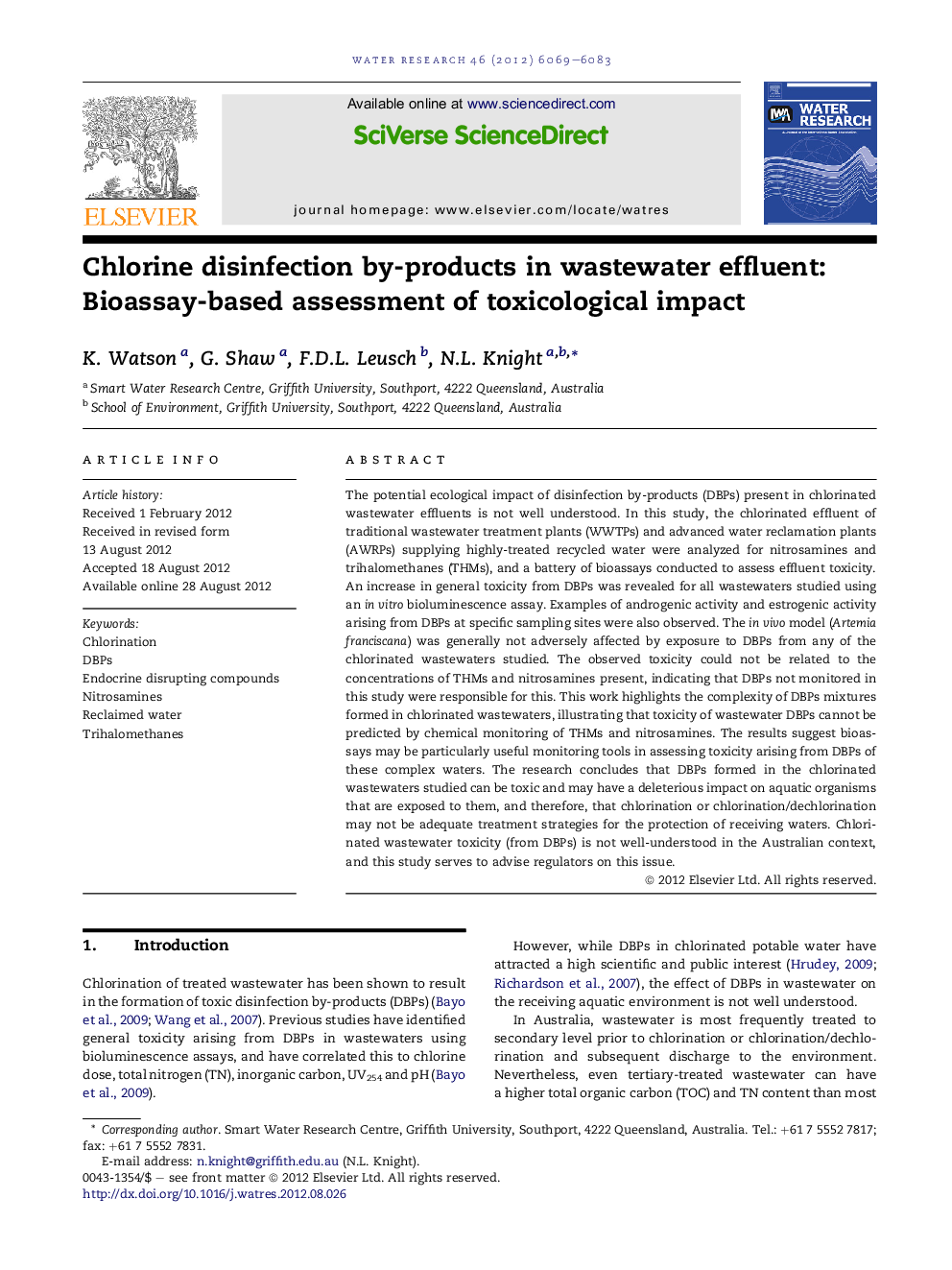| کد مقاله | کد نشریه | سال انتشار | مقاله انگلیسی | نسخه تمام متن |
|---|---|---|---|---|
| 4482051 | 1316846 | 2012 | 15 صفحه PDF | دانلود رایگان |

The potential ecological impact of disinfection by-products (DBPs) present in chlorinated wastewater effluents is not well understood. In this study, the chlorinated effluent of traditional wastewater treatment plants (WWTPs) and advanced water reclamation plants (AWRPs) supplying highly-treated recycled water were analyzed for nitrosamines and trihalomethanes (THMs), and a battery of bioassays conducted to assess effluent toxicity. An increase in general toxicity from DBPs was revealed for all wastewaters studied using an in vitro bioluminescence assay. Examples of androgenic activity and estrogenic activity arising from DBPs at specific sampling sites were also observed. The in vivo model (Artemia franciscana) was generally not adversely affected by exposure to DBPs from any of the chlorinated wastewaters studied. The observed toxicity could not be related to the concentrations of THMs and nitrosamines present, indicating that DBPs not monitored in this study were responsible for this. This work highlights the complexity of DBPs mixtures formed in chlorinated wastewaters, illustrating that toxicity of wastewater DBPs cannot be predicted by chemical monitoring of THMs and nitrosamines. The results suggest bioassays may be particularly useful monitoring tools in assessing toxicity arising from DBPs of these complex waters. The research concludes that DBPs formed in the chlorinated wastewaters studied can be toxic and may have a deleterious impact on aquatic organisms that are exposed to them, and therefore, that chlorination or chlorination/dechlorination may not be adequate treatment strategies for the protection of receiving waters. Chlorinated wastewater toxicity (from DBPs) is not well-understood in the Australian context, and this study serves to advise regulators on this issue.
Figure optionsDownload high-quality image (158 K)Download as PowerPoint slideHighlights
► DBPs in chlorinated wastewaters contribute to effluent general toxicity.
► Toxicity from DBPs in chlorinated wastewater was not correlated to monitored DBPs.
► Androgenic activity consistently arose upon chlorination of one wastewater studied.
► Estrogenic activity of wastewaters increased or decreased with chlorination.
► Wastewater genotoxicity was not attributed to chlorination by-product formation.
Journal: Water Research - Volume 46, Issue 18, 15 November 2012, Pages 6069–6083